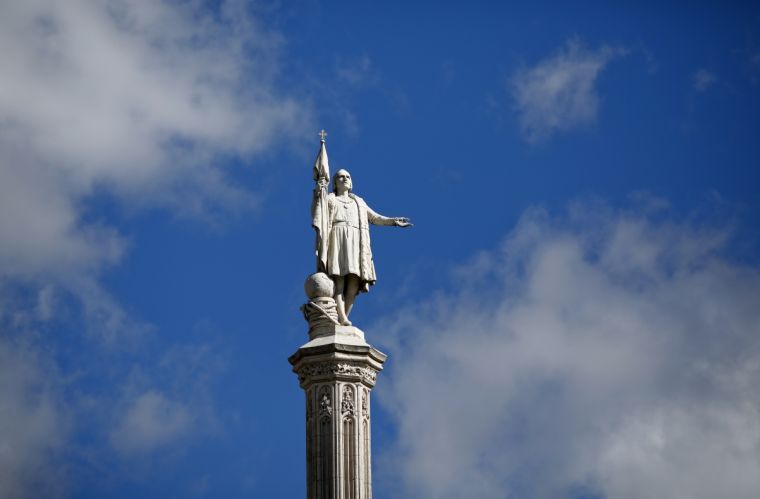Was Christopher Columbus really a Jew fleeing persecution by the Spanish Inquisition?
Was Christopher Columbus an Italian adventurer sent off on a voyage of discovery by Queen Isabella of Spain, as schoolchildren are taught, or was he really a Jew fleeing persecution by the Spanish Inquisition?
The latter idea is not a new one, but it's surfaced again in an article for Breaking Israel News, a Christian Zionist publication.

BIN quotes Roni Segal, academic adviser for The Israel Institute of Biblical Studies, who said: 'There is a lot of evidence that Christopher Columbus was a man of faith seeking to help his brethren escape certain death or conversion in Spain and even that he dreamed of rebuilding the third holy temple in Jerusalem.'
Segal cites Georgetown University linguist Estelle Irizarry, who analysed hundreds of Columbus's handwritten letters, diaries and documents and found his primary language was Ladino, spoken by Spanish Jews and made up of words from Spanish, Turkish, Greek and Hebrew.
In the top left-hand corner of all but one of 13 letter Columbus wrote to his son he included the Hebrew letters beit-hay, standing for words meaning 'with God's help'. He did not include them in letter he wrote to those outside his family.
Some scholars believe he was from Spain, not Italy, and was the son of Jews forced to convert to Christianity on pain of death. Many 'Marrano' Jews feigned conversion, continuing to practise their religion in secret.
He set sail on August 3, 1492, the day after the day on which the destruction of the First and Second Temples were destroyed – inauspicious in Jewish thinking. He also left money to a Jew in his will, and left a tenth of his income to go to provide dowries for needy brides – a Jewish custom. He signed his will with a triangular signature of dots and letters similar to what is inscribed on gravestones in Spanish Jewish cemeteries.
He also occasionally included Hebrew in his writings and referenced Jewish high holidays.
Columbus' contemporaries all believed he was from Genoa. Other hypothetical places of origin include Sardinia, Poland, Norway and even Scotland.











